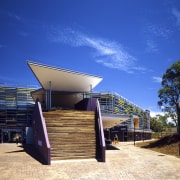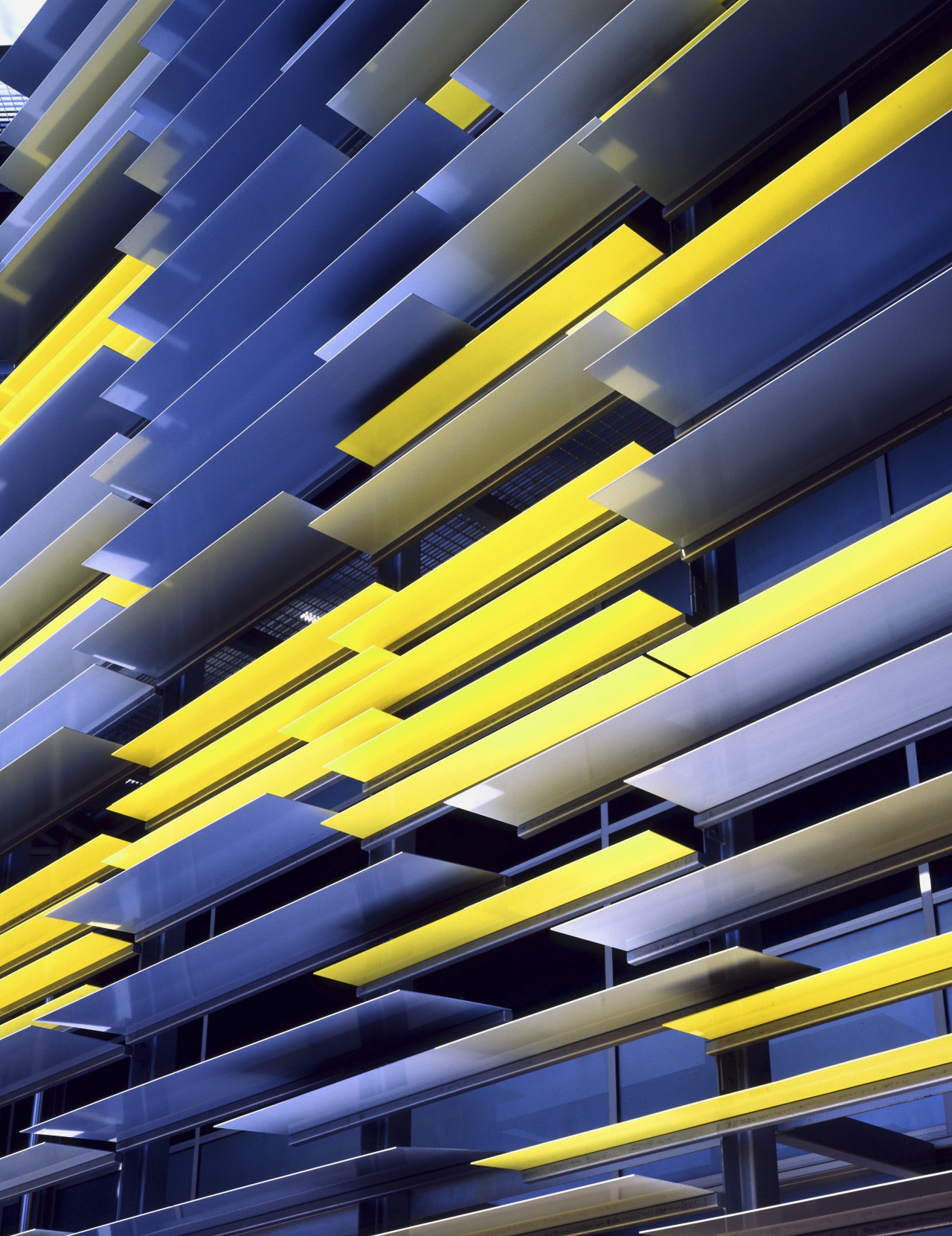A sense of place
Libraries are no longer the austere, silent buildings of the past. The colourful facade of this new university library reflects its much more diverse role within the community
In recent years, sociologists have placed an increasing importance on the concept of the third place after your home and your work place, this is the place where you most like to hang out (think Rover's Return, the Cheers bar and Central Perk). It's a concept that has been picked up by Starbucks, which has extensively promoted its stores as the third place a home away from home.
Ray Oldenburg, in his influential book The Great, Good Place, says third places can be seen as anchors of community life that foster broader, more creative interaction. Third places are also seen as important for civil society, democracy, civic engagement, and for establishing feelings of a sense of place.
Not surprisingly, campus libraries are taking on a similar role, as they cater to the needs of an increasingly diverse student population. The new library building at the Edith Cowan University in Perth is a case in point. Architect Libby Guj of JCY describes the building as a new-generation library, which responds to the diversity that defines modern universities and student life.
"The building is as much a destination as it is a combination of facilities," Guj says. "Books on shelves still exist, but they are just one of the resources within a building which is defined more as a marketplace for learning, communication and interaction. And while groups and companies, such as Starbucks, may try to monopolise this terminology, in essence it is libraries that most closely define the term."
The new three-and-a-half-level library is a kinked, elongated rectangle, built on a sloping site on the west side of the university campus. To reinforce the concept of a community-based learning environment, the building creates a new entry to the campus and brings together four major axes that cross in the centre of the foyer on the second level.
"The building's location and its levels create a number of dynamic and effective interrelationships and spatial configurations," says Guj. "These not only generate a vibrancy but also provide for the effective operation and management of various areas."
The dramatic facade also signifies the building's status. Coloured aluminium fins extend out towards the campus the vertical fenestration on the west facade reminiscent of the spines of books on a library shelf.
"The fins exclude all direct sunlight while maximizing the amount of natural light," says Guj. "This sunshading system has been designed as a customised, but component-based, kit of parts. The design, which originated in the idea of book stacks and shelves, has been abstracted further into a subtle, yet robust weave of horizontal and vertical fins the horizontals to the north and the verticals to the south."

But Guj says although the fins play a highly practical role and improve energy efficiency, they also create a sensual and ephemeral skin. Some fins overlap the span of others, creating a gentle movement along the whole facade.
"The colours of the building are derived from the pixelation of the green and blue of the surrounding bush. The three fin colours mix to create myriad combinations, and at the end of a summer's day the colours change to orange with the sunset."
Other colours, on both the exterior and interior, were inspired by native flowers in the region the purple represents the Geraldton wax flower.
Rectangular boxes appear to punch through the exterior at irregular intervals, providing a solid, anchoring element that counters the more ephemeral fenestration. A similar box is cantilevered above the reception area at the library entrance.
"These boxes define meeting rooms and intimate study spaces," says the architect. "The boxes that form part of the exterior facade have been designed to pop out of the line of the sunshading, creating a picture-framed vision of the activities on the interior."
The difference between the traditional concept of a library and the new model is not just evident in the facade. Typical stereotypes simply don't apply.
"The main focus in on people and activity," says Guj. "The building is designed as more of a marketplace for study and resources, rather than the completely silent library spaces of the past."
Guj says that as part of the design development process, the forms and volumes of the interior spaces were computer modelled.
"The position of the walls and components were confirmed or amended in accordance with the volumetric exploration of each space. Similarly, the spaces were designed to provide a visual connectivity with the outside environment."
In addition to the resource material, the library houses a bookshop, internet cafe and coffee shop. It also opens to a Japanese-inspired courtyard.
The interior includes a mega lab an interactive, technology-based research and learning lounge, which offers a variety of work spaces and seating, including bean bags, ottomans, lounge suites, booths and small rooms.
"The fundamental premise of the design is that everyone studies differently," says Guj. "If a student is most comfortable at home studying with a laptop, a coffee, a friend and a snack, then why shouldn't that be possible here?"
Drab is also a term that no longer defines library interiors. Brightly coloured furniture and booths provide a stimulating environment one that is more reminiscent of a coffee shop.
The architect says the interior was been designed with flexibility in mind, to allow for future change.
Not surprisingly, the project incorporates a number of environmentally sustainable initiatives, in addition to the sunshading. The long axis of the building faces north, to maximise passive solar benefits. Energy-efficient lighting and occupancy controls feature throughout.
The building also has an energy-efficient mechanical plant that will provide a full economy-cycle operation when ambient conditions permit.
Credit list
Architect
Landscape consultant
Structural and civil engineering
Data and security consultant
Acoustic and environmental consultant
Builder
Furniture
Library consultant
Quantity surveyor
Electrician and mechanical engineering consultant
Fire engineering
Project manager
Louvres
Windows
Story by: Colleen Hawkes
Home kitchen bathroom commercial design
Diving into nature
Classic looks, contemporary efficiency
Personality plus
Commercial Design Trends Vol. 24/4
This edition of Commercial Design Trends celebrates knowledge with an array of educational and research facilities that ...
Read More












